Bitget Research Institute: Review of the 2024 Halving Cycle, Bitcoin and Other Cryptocurrencies
Source: Bitget Research Institute
In the dynamic world of cryptocurrency, "halving" is a common yet unique process for each currency. In addition to Bitcoin, cryptocurrencies like Litecoin (LTC), Bitcoin Cash (BCH), Bitcoin SV (BSV), Dash (DASH), and Zcash (ZEC) will also experience halving events. This article delves into the details of these cryptocurrency halving events.
About Cryptocurrency Halving
Cryptocurrency halving is a significant event in the lifecycle of certain cryptocurrencies, particularly Bitcoin and its derivatives. It refers to the process of reducing the rewards that miners receive for adding new blocks to the blockchain by half. This typically occurs at predetermined intervals, specifically after a certain number of blocks have been mined. Halving reduces the rate at which new coins enter circulation, aiming to prevent inflation and increase scarcity, similar to the mining of precious resources. It has a significant impact on the economics of cryptocurrencies, including price, mining profitability, and network security.
List of Cryptocurrency Halving Dates
The table below summarizes the currencies that will undergo halving as of December 12, 2023, along with relevant parameters.
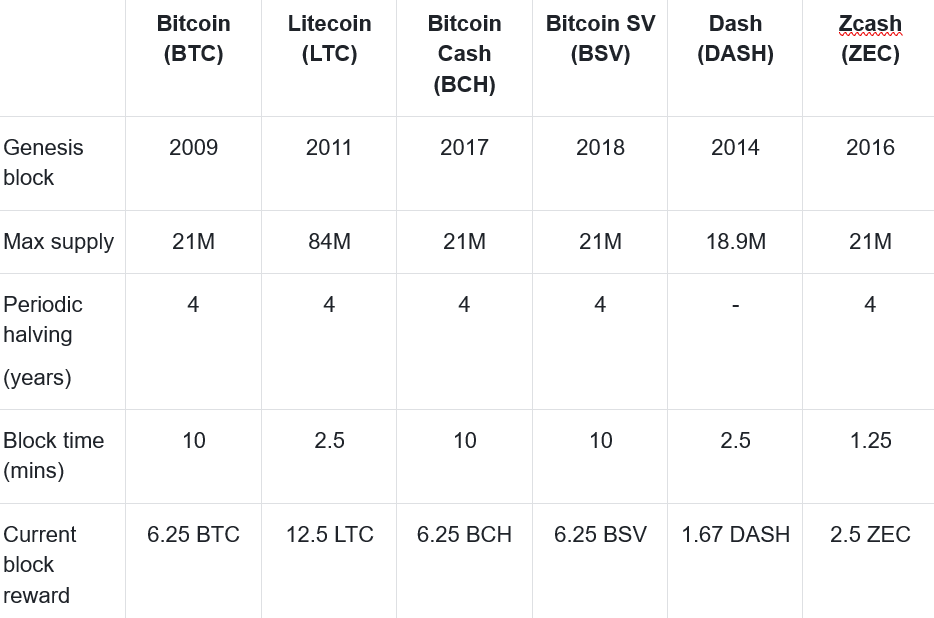
Bitcoin Halving
Bitcoin (BTC) is the first and most well-known cryptocurrency, invented in 2009 by an unknown person or group using the pseudonym Satoshi Nakamoto. It operates on a decentralized computer network using blockchain technology, allowing secure peer-to-peer transactions without intermediaries.
Bitcoin quickly gained popularity among early adopters and tech enthusiasts, with its value skyrocketing from a few cents to over $1,000 within a few years. In the following years, other cryptocurrencies (also known as "altcoins") such as Litecoin, Polkadot, and Cardano emerged, each with its unique features and uses.
The 2024 Bitcoin halving will occur at a block height of 840,000 (the number of blocks mined), expected to take place between April 25 and May 8, 2024. Here is the timeline for the Bitcoin halving event:

Litecoin Halving
Litecoin was created in October 2011 by Charlie Lee, a former Google engineer and Coinbase engineering director, and is often referred to as the "silver" to Bitcoin's gold. It operates on a decentralized, open-source global payment network. The founder of Litecoin, Lee, intended for Litecoin to overcome some of Bitcoin's limitations, allowing for faster transaction confirmation times, making it more suitable for everyday transactions.
Litecoin's halving, similar to Bitcoin's, is a scheduled event that occurs approximately every four years or after mining 840,000 blocks. This cycle is expected to continue until 2142. Although its market impact is not as pronounced as Bitcoin's, LTC typically sees increased trading volume and price volatility leading up to the halving event.
Litecoin halving dates:
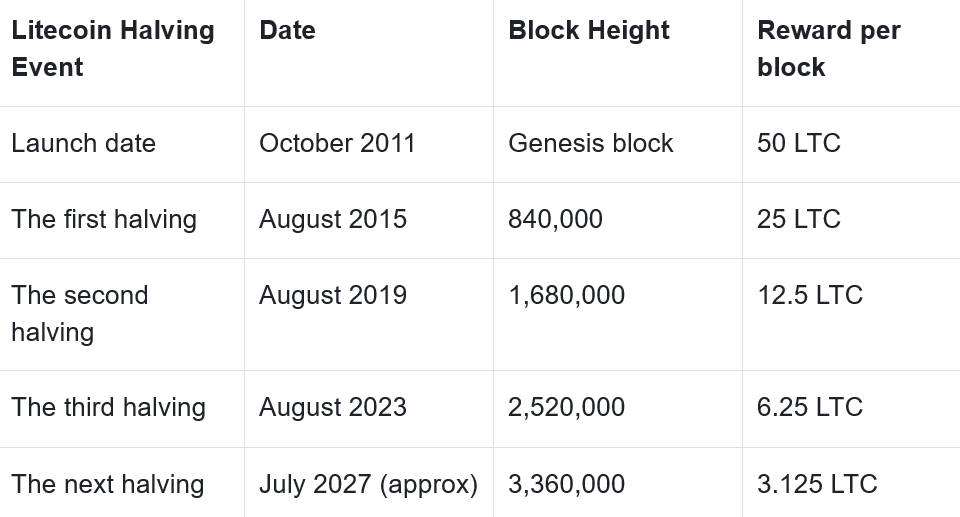
Bitcoin Cash Halving
Bitcoin Cash was born from a hard fork of the Bitcoin blockchain in August 2017. With its larger block size, BCH can handle over 100 transactions per second, providing a decentralized currency system that emphasizes peer-to-peer electronic cash.
The first halving of Bitcoin Cash occurred in April 2020. Contrary to expectations, the BCH halving did not coincide with Bitcoin's halving due to different mining algorithms, resulting in a faster block mining rate and an earlier halving date.
Bitcoin Cash halving dates:

However, after the halving event, there was nearly a two-hour stagnation before the next block was mined. Despite Bitcoin Cash's processing capacity of about 116 transactions per second, this rate plummeted to just 1.11 TPS.
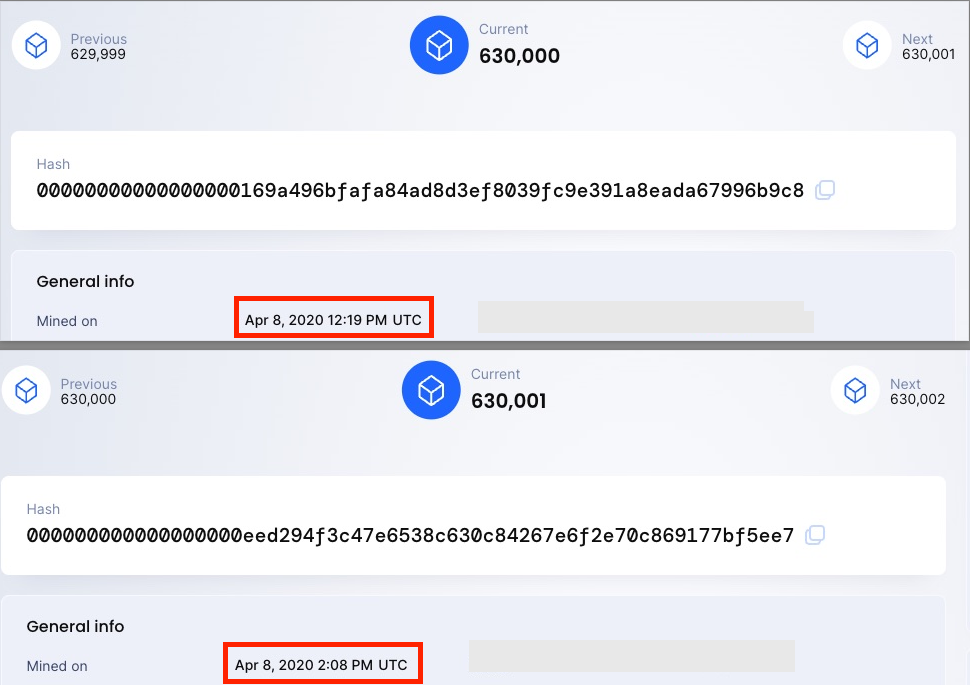
The block 630,001 was mined two hours later (source: blockchair.com)
Since BCH shares the same mining mechanism as Bitcoin, miners can easily switch between the two. This led to a significant number of miners leaving the Bitcoin Cash network in search of better profits elsewhere. Consequently, the mining difficulty level increased, and the profitability for miners continuing to mine BCH tokens decreased. Therefore, the upcoming BCH halving event may be quite controversial.
Bitcoin SV Halving
Bitcoin SV (BSV), which forked from BCH, was created in November 2018 by a team led by Craig Wright, who claims to be Satoshi Nakamoto. BSV's unlimited block size, up to 4GB, allows for low and stable transaction fees.
The unrestricted block size of BSV allows miners to choose their preferred block size. However, this flexibility brings risks of centralization and vulnerability to attacks, as demonstrated by an incident in October 2022 when an unknown miner controlled over 51% of the hash power.
Bitcoin SV halving dates:
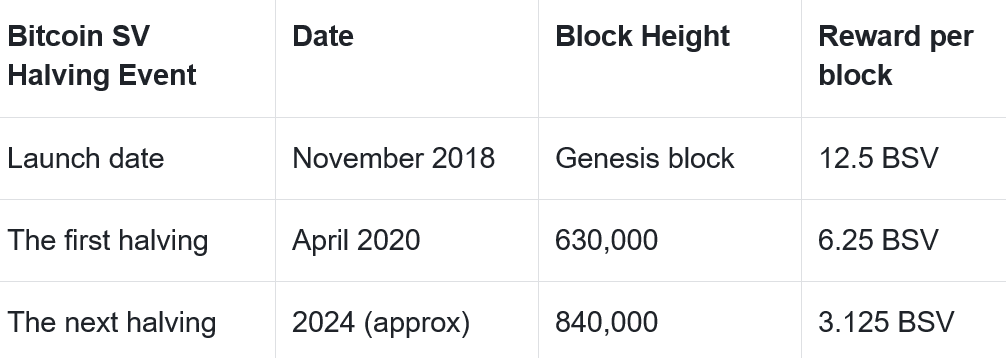
Dash Halving
Dash is an open-source cryptocurrency that emerged in 2014 as a fork of the Bitcoin protocol. It operates as a decentralized autonomous organization (DAO) and is managed by "masternodes" (powerful servers supported by staked assets in Dash, designed to provide advanced services and governance on the blockchain).
Unlike the sudden halvings of other cryptocurrencies, Dash undergoes a gradual halving process, reducing rewards by 7.14% approximately every 383.25 days.
Dash halving dates:
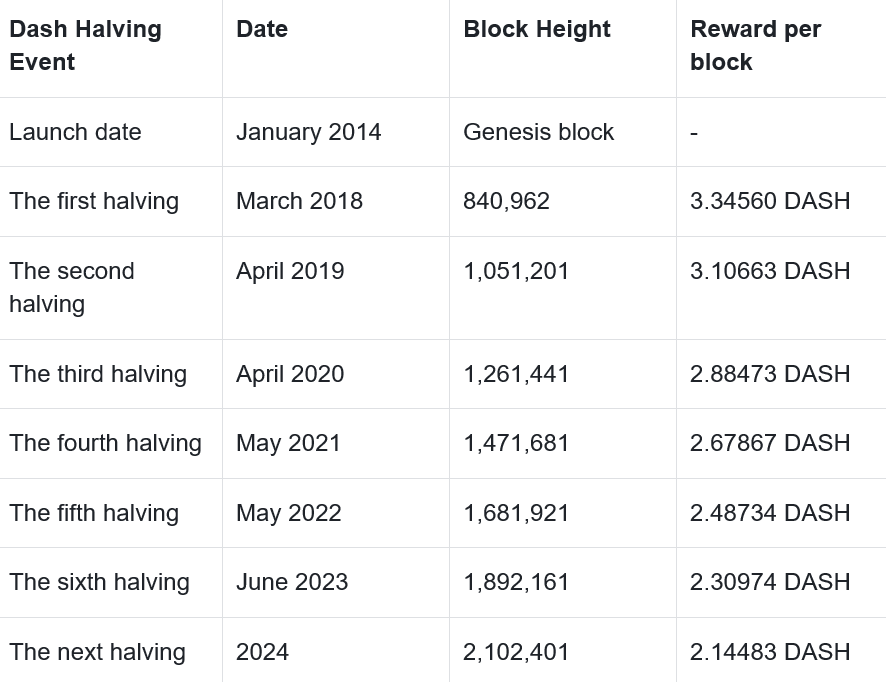
Zcash Halving
Developed by experts from MIT and Johns Hopkins University, Zcash is known for its privacy technology, offering confidential transactions.
Zcash has a unique reward distribution model. At launch, Zcash established a reward distribution plan called the Founders Reward (FR) to fund the development of Zcash. According to the reward plan, 80% (5 ZEC) of the mining rewards would go to miners, while 20% would be allocated to the founders and investors of Electric Coin Company.
After the FR period expired, the community voted and approved that miners would receive 80% of the mining rewards. The remaining 20% would be distributed among funding projects for independent third-party developers (8%), Electric Coin Co (7%), and the Zcash Foundation (5%), which helps support miners in continuing to mine ZEC.
Zcash halving dates:
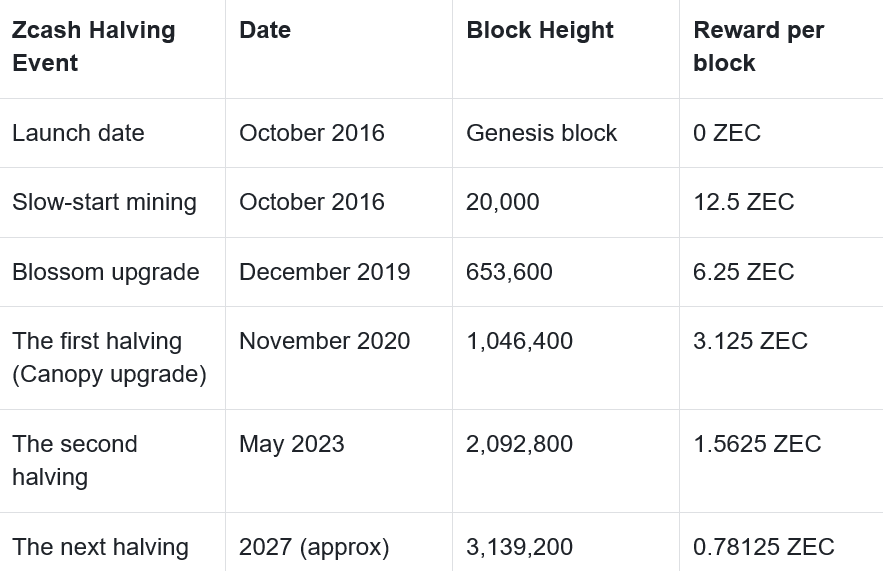
Despite the varying halving mechanisms, these cryptocurrencies share a common goal: to regulate the influx of new tokens, balance supply and demand, and maintain token value. As the cryptocurrency space evolves, these halving events play a crucial role in shaping the future of each currency.










